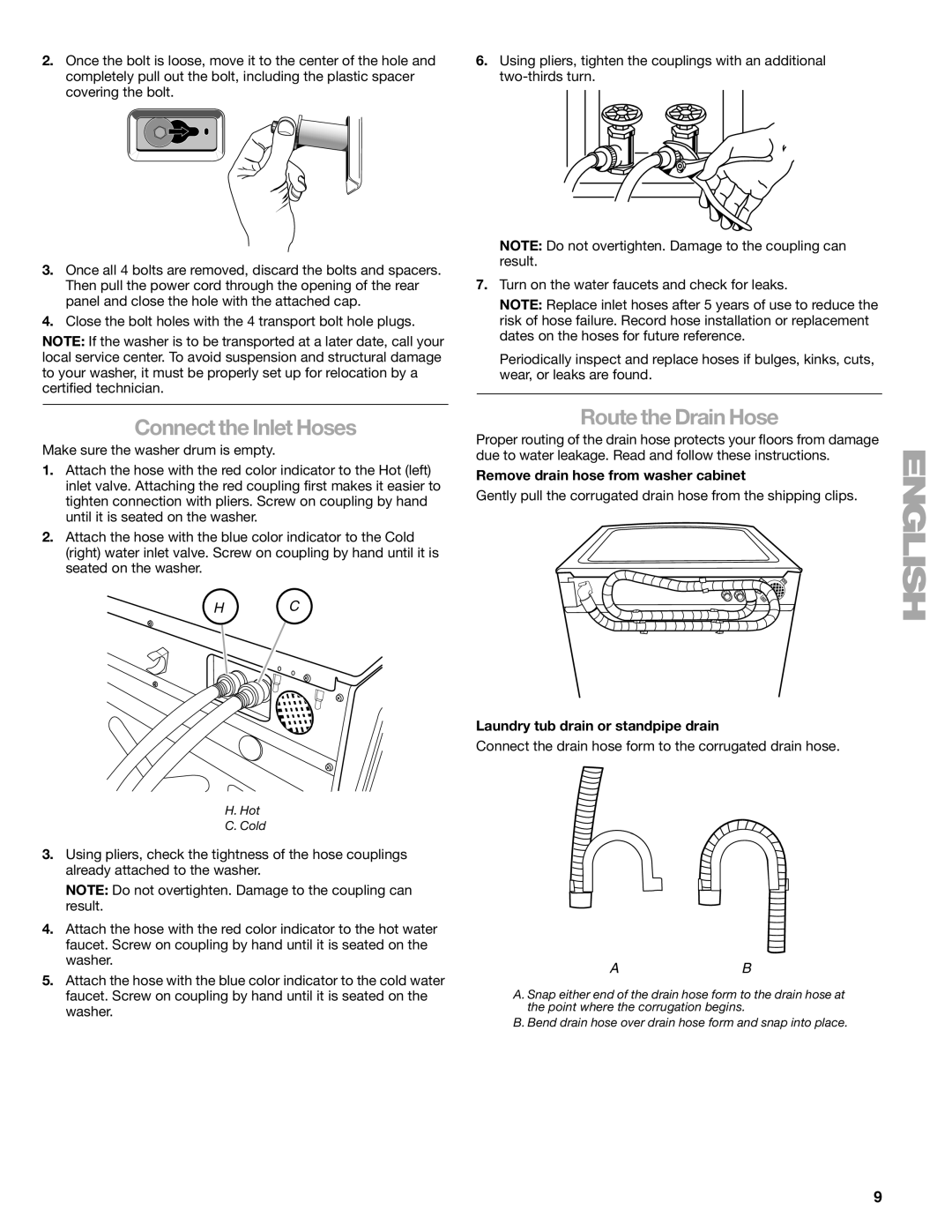4709*, 110.4708* specifications
The Kenmore 110.4708* and 110.4709* are popular washing machines recognized for their durability, efficiency, and contemporary features that cater to a diverse range of laundry needs. These models are designed to bring convenience and performance to users, whether washing a small load or bulky items.One of the standout features of these Kenmore models is their large capacity drum. With enough space to accommodate sizable loads, they reduce the frequency of laundry days and allow users to wash more efficiently. The washer's design also ensures that clothes are evenly cleaned, thanks to its advanced agitation system, which provides thorough washing while being gentle on fabrics.
In terms of technology, the Kenmore 110.4708* and 110.4709* utilize a variety of wash cycles designed to handle different types of fabrics and stains. These cycles include options for delicate items, heavy-duty fabrics, and even quick wash settings that save time for lightly soiled clothes. The intuitive control panel makes it user-friendly, allowing users to select their desired settings with ease.
Energy efficiency is another key characteristic of these washing machines. They are designed to meet or exceed ENERGY STAR certification, which means they consume less water and energy compared to traditional models. This feature not only helps users save on utility bills but also contributes to a more sustainable lifestyle.
The build quality of Kenmore appliances is notable, as they are constructed with durable materials that resist wear and tear over time. The machines are also designed with noise-reduction technologies, ensuring they operate quietly, making them suitable for homes where noise is a concern.
Maintenance is simplified with these models, as they incorporate self-cleaning mechanisms that reduce the need for extensive upkeep. Additionally, the availability of replacement parts and customer service support makes troubleshooting and repairs manageable for homeowners.
Overall, the Kenmore 110.4708* and 110.4709* washing machines are an excellent choice for those seeking reliability, efficiency, and modern features in their laundry routine. With their combination of capacity, versatility, and energy-efficient operation, these models enhance the laundry experience and provide a valuable addition to any household.

